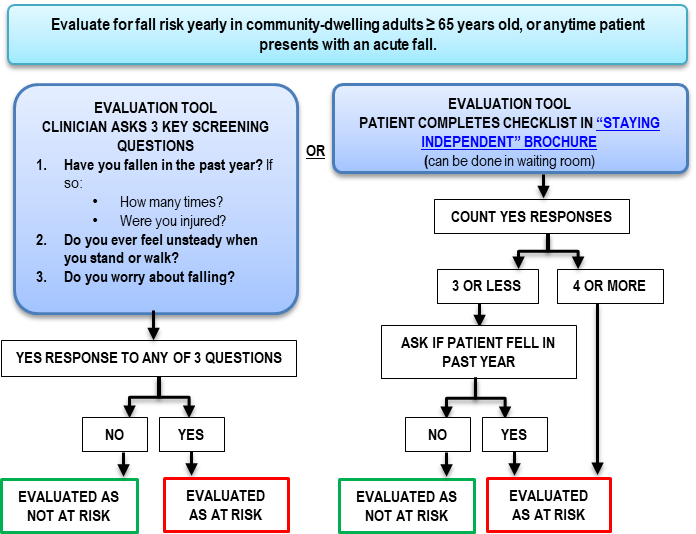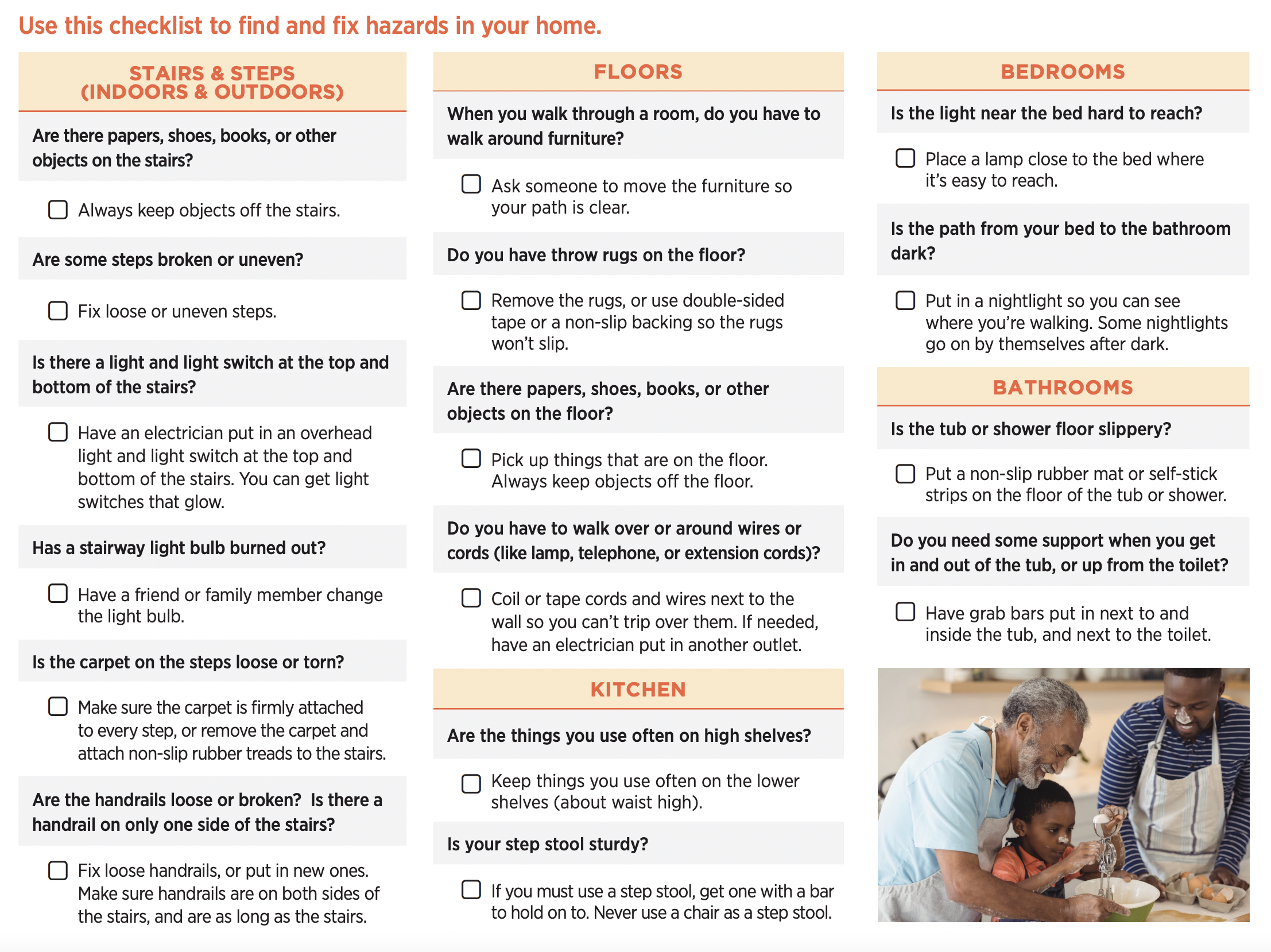A Biased View of Dementia Fall Risk
Table of ContentsThe 25-Second Trick For Dementia Fall RiskNot known Factual Statements About Dementia Fall Risk Dementia Fall Risk Fundamentals ExplainedThe Single Strategy To Use For Dementia Fall RiskThe Greatest Guide To Dementia Fall Risk
Based on indicators and signs and symptoms, such as proof of head injury or a new focal neurologic deficit, calculated tomography or MRI of the brain may be shown. An analysis for reasons for syncope must be carried out only if there is solid suspicion, as when it comes to recurrent, inexplicable falls

Medical care suppliers use a fall danger analysis to determine your danger variables for dropping and make practical recommendations. An autumn danger evaluation is vital since recognizing which variables increase your opportunities of falling assists you: Lessen your danger of falling or hurting yourself.
All grownups 65 years and older should have an initial autumn risk testing. Have fallen in the past year. Worry about dropping.
Unknown Facts About Dementia Fall Risk

Explore this detailed nursing care strategy and administration overview to successfully prevent danger for drops amongst patients. Obtain important knowledge concerning the nursing analysis, nursing medical diagnosis, and goals especially tailored to individuals who are at threat for falls. A is specified as an occasion that results in a person coming to relax inadvertently on the ground or flooring or various other reduced level (WHO, 2021).
Falling is the second leading reason great site of fatality from unintended injuries globally. It is approximated that loss fatality prices in the United state
What Does Dementia Fall Risk Do?
If this price continues, the CDC expects seven loss fatalities every hour by 2030.
Each year, over 800,000 patients are hospitalized as a result of falls. Nurses play a major role in avoiding falls for their individuals via education and learning, assessing fall danger, producing safer environments, and offering treatments in protecting against injuries from drops. A number of risk aspects and problems contribute to drops, including the following:. Matured 65 years and older; lower arm or leg prosthesis; use assistive devices such as pedestrian, crane, and wheelchair; living alone.
Falls are due to a number of variables, and an all natural method to the specific and setting is essential. Mean an individual is taken into consideration at high threat for drops after the testing.
The smart Trick of Dementia Fall Risk That Nobody is Discussing
A calls for making use of a verified device that scientists have examined to be useful in naming the reasons of falls in an individual. The level of loss threat can be figured out utilizing the evaluation of intrinsic and extrinsic factors.
Individuals are most likely to drop once more if they have actually sustained one or even more drops in the past 6 months. The older population goes to boosted risk of fall-related readmissions based upon a study identifying the variables predictive of repeat drops connected results (Prabhakaran et al., 2020). Individuals with impaired awareness and disorientation might not comprehend where they are or what to do to assist themselves.
Additionally, complication and impaired judgment enhance the person's opportunity of falling. The capacity of people to secure themselves from falls is influenced by such aspects as age and development. Older people with weak muscular tissues are most likely to drop than those that maintain muscular tissue strength, adaptability, and endurance. These changes include decreased aesthetic feature, damaged color perception, modification in center of gravity, unstable gait, review decreased muscle mass toughness, lowered endurance, altered depth perception, and delayed response and reaction times.
The Ultimate Guide To Dementia Fall Risk
Less contrast sensitivity was rather related to both increased prices of falls go to website and other injuries, while decreased aesthetic skill was only connected with boosted loss rate (Wood et al., 2011). Sensory assumption of ecological stimulations is paramount to safety and security. Vision and listening to impairment limitation the individual's capability to perceive threats in the environments.
Older grownups who have poor equilibrium or difficulty strolling are much more most likely to drop., or other clinical problems and treatments., and use of psychotropic drugs (Stanmore et al., 2013).
Comments on “Our Dementia Fall Risk Statements”